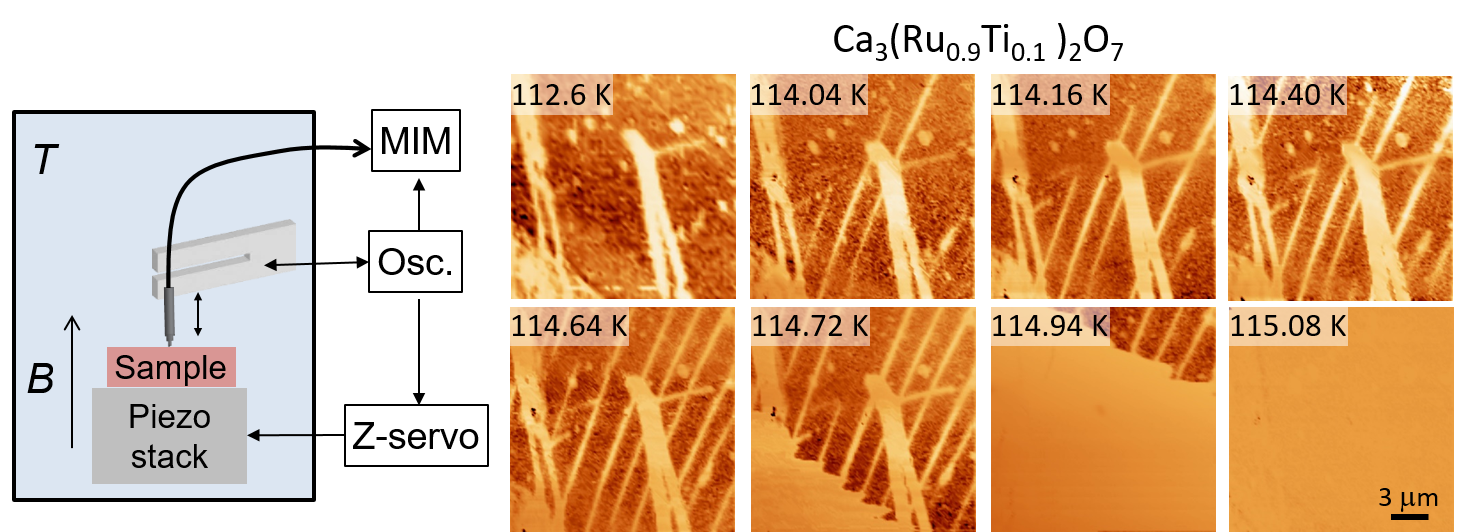Research: Metal-insulator transitions
Metal-insulator transitions in complex systems are accompanied by orders of magnitude change in resistivity values In contrast to macroscopic measurements, which are usually inadequate for strongly correlated systems with intrinsic spatial inhomogeneity, local imaging is crucial to advance our knowledge on the underlying energy scales and their influence on the real-space phase coexistence. Fundamental understanding of the microscopic nature of such processes are of great scientific and technological importance.

Gangshettiwar et al., Phys. Rev. B 101, 201106(R) (2020)
(Left) Schematic of the tuning-fork-based cryogenic MIM setup. (Right) MIM images at various temperatures across the metal-insulator transition of 10% Ti-doped Ca3Ti2O7. A new metallic stripe phase oriented along the in-plane crystalline axes emerges inside both the G-type antiferromagnetic insulating state and the paramagnetic metallic state. Our work provides a model approach to correlate the macroscopic properties and mesoscopic phase separation in complex oxide materials.
This research is funded by the DOE under Award DE-SC0019025.